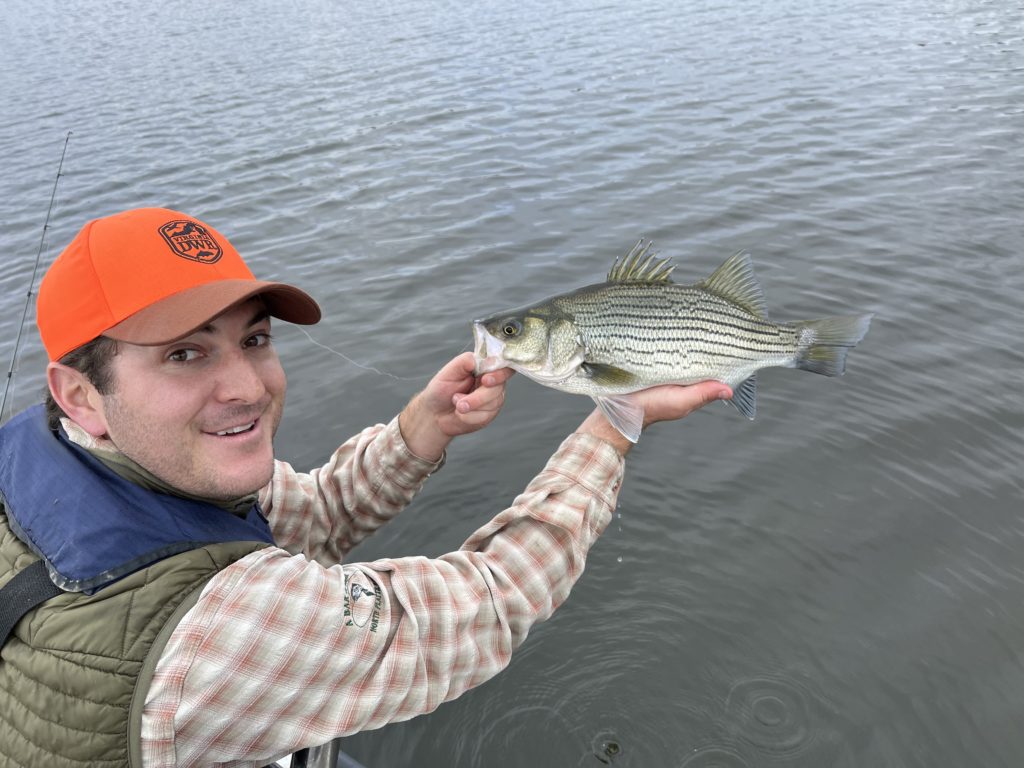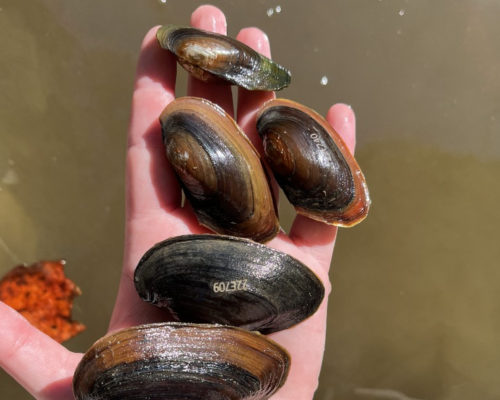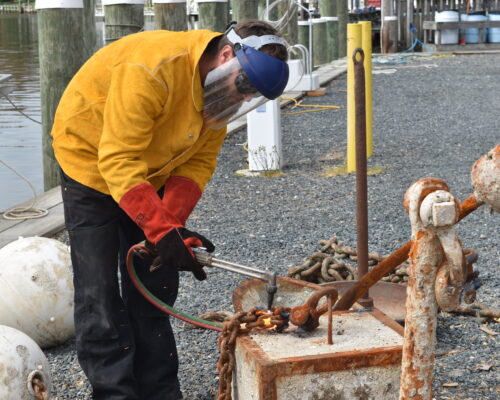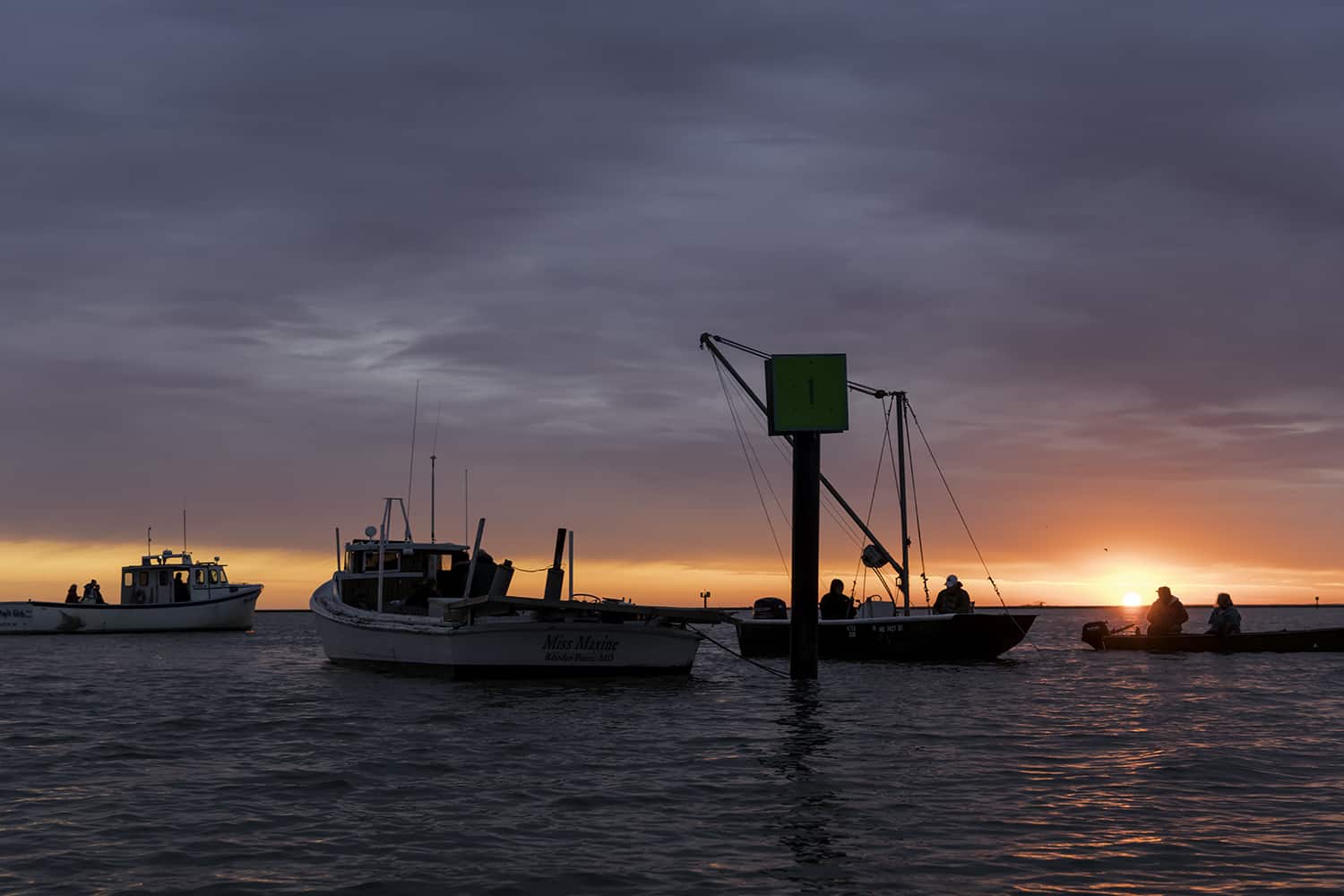A strong fish led Virginia Department of Wildlife Resources’ Alex McCrickard on quite a chase before it finally submitted to the net. At around 20 inches and four pounds, landing the fish should have been cause for a high-five, except that it shouldn’t have been in that lake at all.
The fish was a “wiper,” a hybrid cross between a striped bass (rockfish) and a white bass, stocked for anglers in some places. But the state Department of Wildlife Resources (DWR) had purposely not stocked it in Lake Chesdin, the 3,100-acre reservoir on the Appomattox River near Petersburg where McCrickard was fishing (with this story’s author, as it happens).
Lake Chesdin, which lies on the border between Dinwiddie and Chesterfield Counties, is a popular body of water for anglers, but its Brasfield Dam lies only eight miles upstream of the Appomattox’s confluence with the upper tidal James River.
The dam experiences frequent spillovers from its powerful river, which means the hybrid “wiper” can pass into the James, which eventually leads to the Bay.
While most hybrid rockfish are sterile, rare fertile individuals can interbreed with the native stripers that spawn in the James each spring. The Chesapeake’s beloved rockfish are overfished at present, with a coastwide rebuilding plan underway under the auspices of the Atlantic States Marine Fisheries Commission. The last thing these treasured fish need right now is pollution of their genetic integrity.
DWR carefully monitors Lake Chesdin fish populations, emphasizing especially robust stocks of largemouth bass, crappie, and channel catfish, all of which are well-established also in the tidal Appomattox and James.
As we examined the hybrid in my skiff’s net, McCrickard, DWR’s Aquatic Education Coordinator, remarked, “Our stockings create and improve recreational angling opportunities and are guided by sound science. This is why it always comes as a surprise to us when we encounter species of fish that we never stocked in Department-managed waters.”
There was even more concern when a crew of DWR fishery biologists caught another wiper in a gillnet survey at Chesdin several weeks later. They may have come from some well-meaning angler who caught them in another lake where DWR does stock them, put them in a livewell, and released them into Chesdin.
According to Virginia code 4VAC 15-320-60, “it is unlawful to stock any species of fish into any public inland waters of the Commonwealth without first obtaining written approval to do so from the Department of Wildlife Resources.” 4VAC 20-252-210 specifically prohibits release of live striped bass and live hybrid striped bass in the waters of the Commonwealth from an aquaculture facility located within or outside the Commonwealth without written permission from the Commissioner of Marine Resources. Stocking fish without obtaining the proper permits is unlawful and punishable by up to six months in jail time and up to a $1,000 fine.
Our native fish species have evolved over the past ten thousand years to best fit the parts of the Chesapeake Bay ecosystem where they naturally spawn and live. Those adaptations can be as micro-specific as spawning rockfish in each river system developing egg specific gravity values that keep them suspended in the flow conditions of that river. Inadvertent introduction of white bass genes into the James River rockfish stock carries genuine risk of disrupting that important characteristic. Such risks are one reason why fishery managers at DWR and the Maryland Department of Natural Resources take their science so seriously.
-John Page Williams




